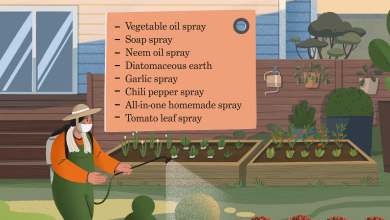The Guide You Need to Learn to Plant Canons

The canons are not very well known. but you shouldwant to plant them in your garden.
The reasons? I tell you:
- They are very easy to plant.
- They are harvested quickly.
- They are a great companion in any salad.
The good part is that you have come to the right place.
If what you want is to learn how to sow lamb’s lettuce, keep reading andyou will have no problem putting it into practice.
Step by Step to Plant Canons:
- When? In July and August, since it is an autumn and winter herb.

- Where? Shady places.
- Harvest time? 1-2 months after sowing.
- How do we prepare the land? Tight and fresh earth. We eliminate competing weeds.
- How are they planted? Two or three seeds, in a line and every 20cm. Not too deep.
- How are they watered? If you have a good drip system, otherwise with a hose without flooding.
- How often are they watered? They do not require much water as they are a fall and winter plant. However, if there was a drought, it would be necessary to water abundantly. It requires a fresh and moist soil (not waterlogged).
- What can we plant nearby? Onions, carrots, leeks, turnips, and cabbage.
- What pests and diseases does it have? Rot, weeds, excess moisture, drought, fungus.
The lamb’s lettuce, whose scientific name is Valerianella olitoria, is a type of herb from the valerian family. They are a type of leafy vegetables.
The canons have high nutritional properties and therefore we are interested in learning how to plant them to have them available in our garden.
In addition, in the kitchen we can complement them very well in a salad (playing the role of lettuce, for example) or steamed like spinach.
Among other things, canons are rich in:
- Fiber.
- iron.
- Zinc and magnesium.
- Sodium, potassium, phosphorus and selenium.
- Vitamins A, C and E.
- Tamine and Riboflavin.
In addition, lamb’s lettuce has diuretic, laxative and revitalizing properties. So it is convenient for us to have it in our garden.
Taking into account all of the above, which is not a small thing, you should know that if we sow lamb’s lettuce and get them to grow strongly, we will be able to harvest during almost the whole year. Specifically, the cultivation of canons can last up to 10 months.
When do we start planting lamb’s lettuce?
You should know that lamb’s lettuce loves freshness and cold and winter times. So start sowing them in August and September so that they gain strength in the autumn and winter months.
We will grow the lamb’s lettuce in cool, humid and shaded areas. Excess heat is usually one of its worst enemies, as well as drought.
Where do we plant them and how do we prepare the land?
Unlike most crops, we can plant lamb’s lettuce in a shady spot. In fact, they will thank us. Canons prefer shady places.
Above all, the land must be well tilled and free of weeds. The weeds are a clear competition for the lamb’s lettuce, so we must have the land very clean.
They prefer a tight soil, than a loose and airy one. In addition to that they like cool soils.
Did you know…Lamb’s lettuce is known as «cat grass», since its intense scent attracts felines?
How do we pay?
 Canons do not require a good subscriber. They are not very demanding in this aspect. So the very remains that remain on the ground could be enough. These remains can come from fallen leaves, previous crops, homemade compost, etc…
Canons do not require a good subscriber. They are not very demanding in this aspect. So the very remains that remain on the ground could be enough. These remains can come from fallen leaves, previous crops, homemade compost, etc…
In any case, a good help could be well-fermented compost or worm castings. In the event that the soil has manure or organic matter, it must be well decomposed.
How and how often do we water?
Being an herb that is sown in autumn and winter, it will not require much water. Since the rains and humidity of the night will keep the soil sufficiently wet.
However, in dry seasons (not due to cold, but due to lack of rain) it is advisable to help the lamb’s lettuce. Once again, the ideal option would be dripping and in case of little rain we will have to water frequently.
With the drip we could program a daily irrigation or every two days, of about 30-45 minutes.
How do we plant it?
Sowing lamb’s lettuce is not entirely simple. This is because new lamb’s lettuce seeds germinate poorly, so look for those that are at least two years old, if possible.
We can take lamb’s lettuce seeds and spread them in lines about 20cm apart. The sowing of the lamb’s lettuce, as we have mentioned, will be carried out from July in order to be able to harvest in autumn and at the beginning of winter.
Trick:Putting straw on the ground where we have planted the lamb’s lettuce will help prevent weeds from coming out and, above all, will keep the soil moist enough. Something that our canons will greatly appreciate.
When do we collect?
 If sowing and maintenance have been good, we can also harvest lamb’s lettuce throughout the winter and even early spring.
If sowing and maintenance have been good, we can also harvest lamb’s lettuce throughout the winter and even early spring.
To harvest them we will simply cut the largest leaves.
What problems do you usually have?
As it is a winter plant, it does not usually have many parasites or diseases. Its biggest enemies are rot, excess moisture or dryness.
To prevent the lamb’s lettuce from rotting, we will eliminate those leaves that we see yellowish or decayed.
Another problem that can appear is fungi, due to the humidity required by the lamb’s lettuce. We must pay particular attention to the fact that yellowish spots do not appear on the leaves, in which case we will prune them immediately.
Did you know…Its name in Spanish (canon) refers to the fact that it was formerly a typical crop of monasteries?
What do we plant nearby?
They tend to get along with almost all crops, but especially:
- turnips
- Leeks.
- Cabbages.
- Carrots.
- Onions.




![Photo of Onion Fly (Chortophila antiqua): [Characteristics, Detection, Effects and Treatment]](https://www.complete-gardening.com/wp-content/uploads/2022/08/onion-fly-chortophila-antiqua-characteristics-detection-effects-and-treatment.jpg)